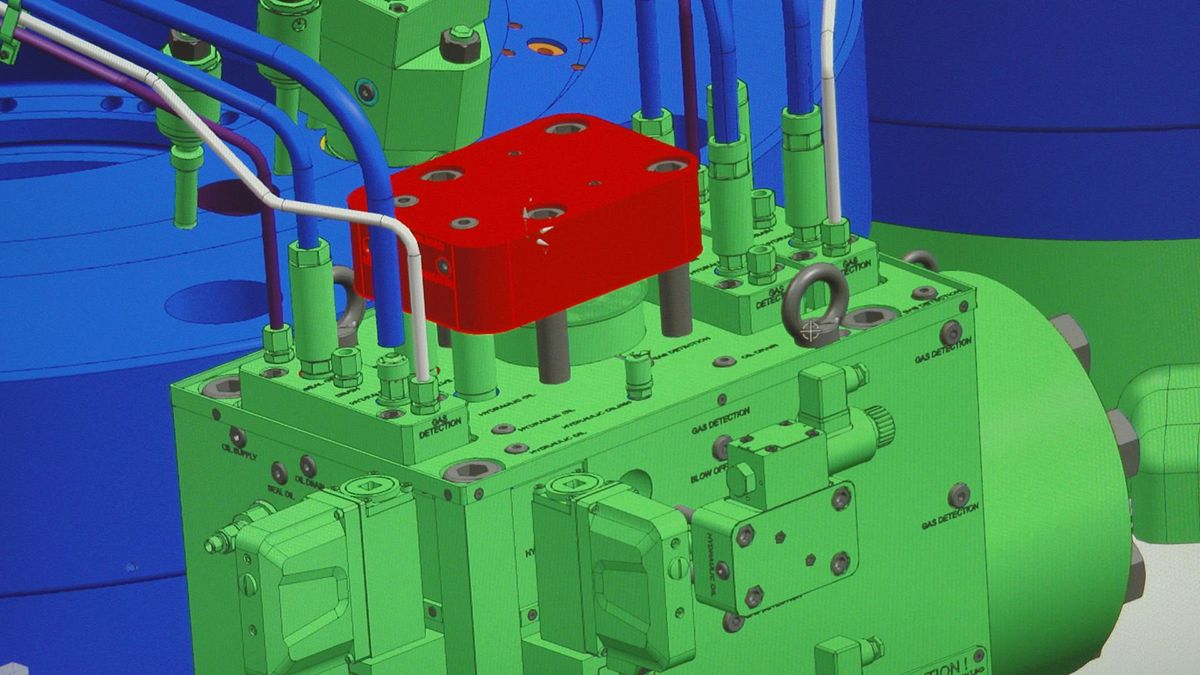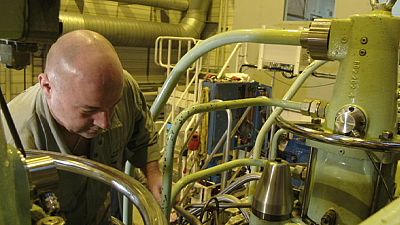A new generation of LNG-diesel engines is set to transform shipping. But is the market ready to adapt?
At a research facility in Copenhagen, a unique ship’s engine has been developed. Powered by both diesel and liquefied natural gas, it has been designed to reduce the emissions of gases like carbon dioxide and nitrogen oxides.
Its performance differs little from normal diesel engines, say the scientists involved in this European research project
.
“Ship operators will have extra screens to monitor on the operation panel. The only extra function that they will have to take care of is to press gas when desired,” says Michael Johnsen Kryger, a mechanical engineer with MAN Diesel & Turbo.
The biggest challenge was to develop components from new materials that would still be safe and reliable, says Kryger: “The gas is under pressure of about 300 bars. And we have a double wall system consisting of an inner pipe and an outer pipe. The outer pipe is ventilated and we are monitoring the flow, and we are monitoring the gas so we are able to see if there is any gas leakages in the system”.
It was crucial to see inside the engine during testing, as Johan Fredrik Hult, an optical engineer with MAN Diesel & Turbo explains: “We used high-speed cameras together with an endoscope to actually look inside the interior of the engine.”
“We’ve increased our understanding of how natural gas, which comes in a high pressure, is being ignited by the diesel pilot inside the engine. And this, of course, allows us to optimize, for example, timing, geometrical arrangements of the different injectors in order to ignite the gas as efficiently as possible.”
Over 100 of these engines have already been sold to ship owners refitting their fleets. Buyers are convinced that, in a sector constantly submitted to ever stricter environmental regulation, their investment will eventually pay off, says Peter Andersson, Head of Ship Management at UECC: “You have to look at the long picture. You have a vessel that is going to operate between 25 and 30 years.
“And then, in this eco-zone when you can’t burn high sulphur fuel any more, so in that perspective we see it as a win-win situation.”
The researchers are now looking ahead. The technology for 100 percent natural gas engines exists, they say, but the market needs to adapt.
“I think we need to see that supply systems and bunkering systems (highly protected natural gas refueling stations) are available in large scale for LNG,” says Lars R. Juliussen, Helios project coordinator.
“When that is the case and you have a safe supply and also a price structure that is safe and reliable, then people would like to go towards a situation that is a hundred percent gas,” he adds.
With around 99% of the world’s commercial fleets powered by diesel, the market potential of these engines is there to be exploited, researchers conclude.




